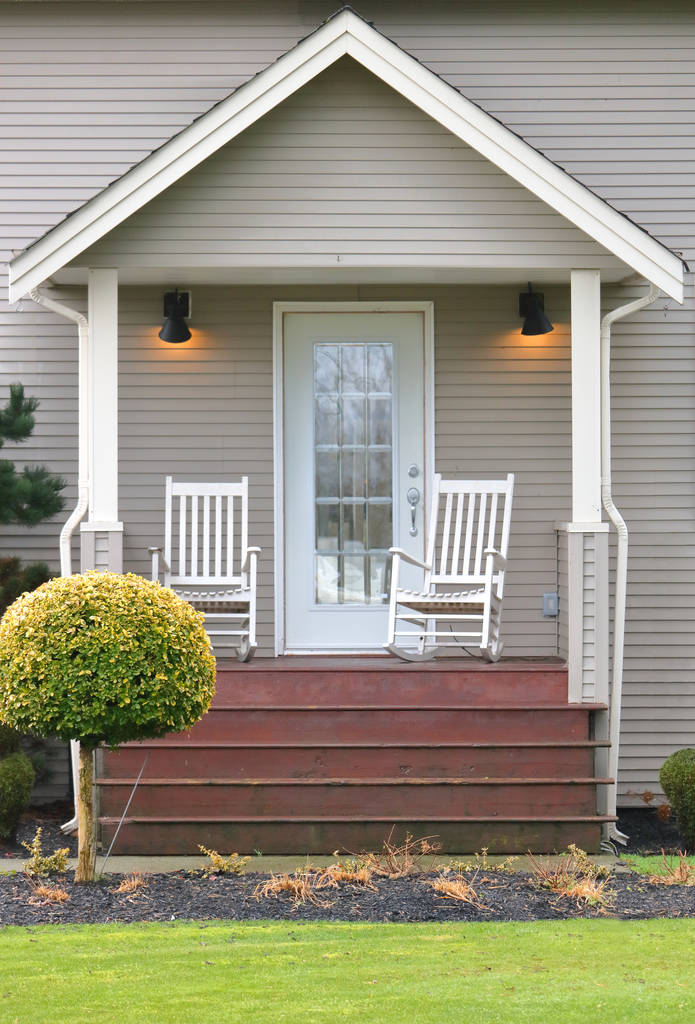To install motion-activated dusk-to-dawn security lights, start by switching off your power at the main panel, and use a voltage tester to double-check that it’s off. Position the light between 8 and 10 feet off the ground for maximum coverage, using weatherproof connectors to handle outdoor conditions and protect wiring. Calibrate sensitivity to reduce false triggers—something electricians recommend for minimizing neighbor complaints—and adjust the timer for efficiency. With strategic planning, you’re on track for energy savings and enhanced security, while more tips await in subsequent steps.
Key Takeaways
- Turn off power at the main panel and verify with a voltage tester before starting installation.
- Install the fixture 8–10 feet high at key entry points for optimal motion detection.
- Use weatherproof connectors and cable protectors for all outdoor wiring connections.
- Calibrate sensitivity, timer, and dusk-to-dawn settings to minimize false triggers and maximize efficiency.
- Regularly clean and inspect sensors and wiring to ensure reliable operation and longevity.
Tools and Safety Measures
Before you start installing motion-activated security lights, it’s crucial to gather the right tools and take every necessary safety precaution. You’ll need reliable wire strippers for prepping wire connections, a non-contact voltage tester to verify the power’s off, and a 6-in-1 screwdriver for versatility.
Don’t forget high-quality LED bulbs, as they’re energy-efficient and long-lasting, and wire nuts for securing all electrical connections. Fixture compatibility matters—make certain your new light matches your existing setup or power source.
Always turn off power at the main panel, and double-check with a voltage meter. According to licensed electrician Sara Jenkins, “Confirming power is off is non-negotiable.”
If you’re unsure about any step, consult a professional to guarantee safety and code compliance.
Preparing the Installation Site
Although it’s tempting to jump right into wiring, you’ll get better results if you initially assess the best location for your motion-activated security light.
Evaluate your site layout by focusing on key entry points like doors, garages, and gates—a local security expert says, “Strategic light positioning is your primary line of defense.”
Aim for an installation height between 8 and 10 feet; this covers vulnerable areas, minimizes glare, and makes maintenance easier.
When you’re ready to drill, use a spade bit and verify the hole accommodates all necessary wiring, factoring in weatherproofing.
Don’t forget to take into account the environmental impact on neighbors and comply with local outdoor lighting regulations.
Proper planning now means fewer headaches—and more freedom—later.
Electrical Disconnection and Fixture Removal
When removing the old fixture, have a friend support its weight to prevent damage or injury from falling parts—fixture support is key.
Label each wire as you disconnect it, which will make reinstallation smoother and safer.
Carefully label every wire as you disconnect it to ensure a safer, more straightforward reinstallation process.
Use proper tools, such as insulated screwdrivers and wire strippers, and always wear gloves and safety glasses.
Clean the area thoroughly before continuing.
Mounting and Wiring the Motion Sensor Light
Mounting and wiring the motion sensor light is a crucial step that demands both precision and attention to detail. For those who value freedom and independence, following expert-recommended mounting techniques and wiring methods guarantees your installation is both safe and effective.
Choose a location with clear visibility, minimal obstacles, and proper height to optimize coverage. Electrician Maria Torres advises, “Adhesive-based mounts are great for renters or historic homes where drilling is discouraged.”
Identify black, white, and copper wires before connecting them using secure wire connectors and electrical tape. Always verify voltage compatibility and proper grounding for safety.
- Use weatherproof connectors and cable protectors for outdoor wiring.
- Confirm the fixture is securely and evenly mounted.
- Double-check all wiring connections before restoring power.
Adjusting Sensitivity and Operational Settings
With your motion sensor light securely mounted and wired, it’s time to fine-tune how your system responds to movement and changing light conditions.
Start with sensitivity calibration—manual dials or app-based settings let you minimize false triggers from pets or passing cars, focusing detection exactly where you need it. “In an urban environment, reducing sensitivity can help avoid unnecessary activations from pedestrians,” says lighting expert Emily Tran.
Next, make operational adjustments: set the dusk-to-dawn feature so your light only activates after sunset, saving energy and reducing light pollution.
Adjust timer functions to determine how long your light stays on after motion is detected. Use zone controls or vertical and horizontal range settings to direct coverage, ensuring maximum security for driveways or entryways while minimizing disturbances to neighbors.
Maintenance Tips and Troubleshooting Steps
Although motion-activated security lights are designed with durability in mind, regular maintenance is crucial to guarantee consistent performance and extend their lifespan.
According to expert installer Janice Lee, “A consistent maintenance frequency—every three months—prevents small issues from becoming big headaches.”
Consistent maintenance every three months helps you catch minor problems early and keeps your security lights working at their best.
Start by keeping the sensor and lens clear using a soft, dry cloth; avoid harsh chemicals that could degrade the housing. If you notice dimming or flickering, check for debris or water buildup, and replace components if necessary.
If your lights misbehave, practice these troubleshooting techniques:
- Check All Power Connections: Secure, corrosion-free wiring guarantees reliable operation.
- Test Sensor Functionality: Make sure dusk-to-dawn settings trigger the light properly.
- Adjust or Clean the Sensor: Clear away obstructions and recalibrate as needed for peak sensitivity.
Conclusion
By installing motion-activated dusk-to-dawn security lights, you’re taking a practical step to improve both safety and energy efficiency around your home. “Proper placement and setup can reduce false alarms and lower total electricity consumption,” says licensed electrician Maria Lin. Remember to check settings seasonally and clean the sensors, as debris or spider webs can cause malfunctions. With regular maintenance and careful adjustment, your lighting system should serve you reliably for years to come.

